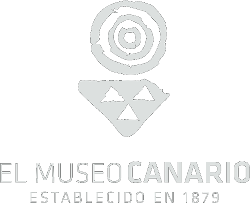Some of the instruments used in the various productive activities carried out by the ancient canaries were made with stone, in the absence of metallic minerals on the islands. The coarse-grained volcanic rocks (traquibasaltes, cavernous basalts, phonolites, etc.) and volcanic (obsidian) glasses displayed in one of the display cases illustrate the main raw materials that the ancient canaries used when making these utensils. The abundance and wide distribution of the first on the island would allow its capture in the vicinity of the archaeological sites where they were to be employed. A different situation occurs in the case of obsidian, whose outcrops are restricted to specific geographical points, incorporating the volcanic glass obtained from these enclaves into an insular distribution network.
Lascas, scrapes, axes, beaks, etc. are exhibited in the room as a sign of the importance that the lithic industry had in carrying out multiple activities of daily life: carnage, pottery, skin work, wood, cave excavation, etc. Mills and mortars are also exhibited in this room, mainly used in the preparation of cereals for consumption in the form of flour. The teeth that shaped the circular toba mills were made from blocks extracted from quarries located in different parts of the island. As would be the case with obsidian extraction systems, stonework would require particular technical knowledge to ensure production success, so it is likely that these work was carried out by individuals or groups of specialists.

